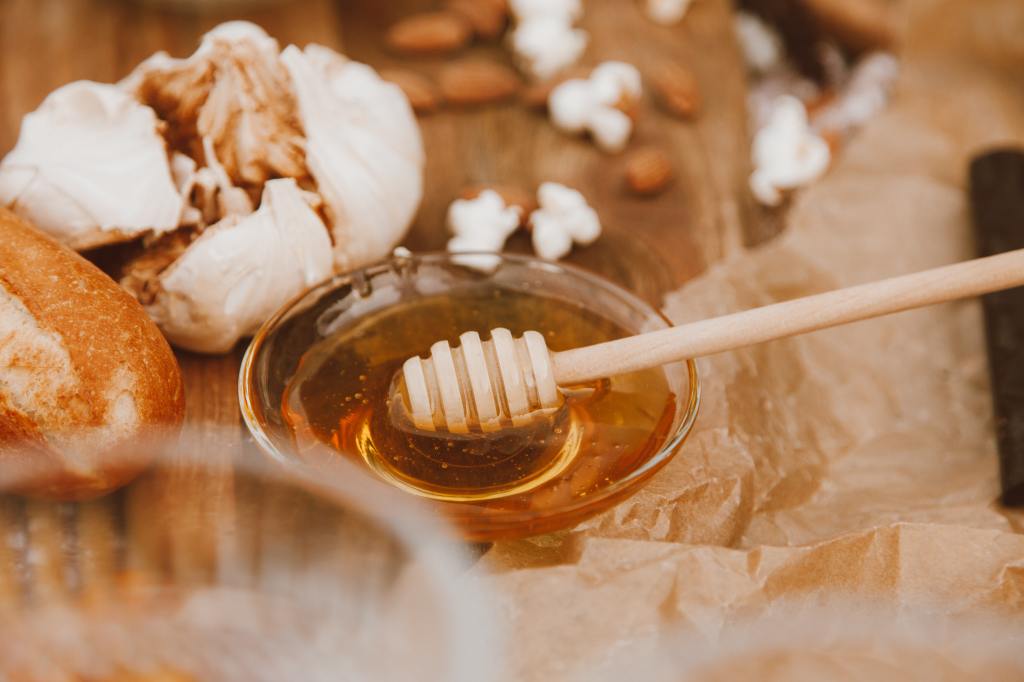Introduction
Honey, that golden, viscous liquid produced by industrious bees, has been a cherished and coveted food source for centuries. Beyond its delightful taste, honey offers a multitude of benefits, both culinary and medicinal. From ancient civilizations to modern kitchens, honey has held a special place in the hearts and pantries of people worldwide. In this article, we will delve into the fascinating world of honey, exploring its origins, production, varieties, and the numerous ways it enriches our lives.
The Origins of Honey

The story of honey begins with the hardworking honeybee. These remarkable insects collect nectar from flowering plants and transform it into honey. The process involves the bees ingesting the nectar and regurgitating it into honeycomb cells. Through a combination of enzyme activity and evaporation, the nectar is converted into honey. The bees then seal the cells with beeswax, preserving the honey for their colony’s sustenance.
This ancient practice of honey collection dates back thousands of years, with evidence of honey production found in cave paintings dating as far back as 8,000 years ago. Ancient Egyptians, Greeks, and Romans revered honey for its sweetness and believed it possessed healing properties. They used it as a sweetener, a preservative, and even in religious ceremonies.
The Honey Harvest
The honey harvest is a delicate and labor-intensive process. Beekeepers, also known as apiarists, carefully manage beehives to ensure healthy and productive colonies. The harvesting typically occurs during the late spring and summer months when nectar flow from flowers is abundant.
Modern beekeeping involves using specialized equipment such as smokers, protective clothing, and hive tools to minimize stress to the bees. Beekeepers gently remove the frames containing honey-filled comb from the hives, carefully avoiding any harm to the bees. Once collected, the frames are transported to a processing facility.
Processing and Varieties of Honey
In the processing facility, honey is extracted from the comb using centrifugal force or by uncapping the comb and allowing the honey to drain. The extracted honey is then strained to remove any remaining impurities, such as bits of wax or bee parts.
Honey’s flavor and color vary depending on the nectar source. Different floral varieties produce distinct types of honey, each with its unique characteristics. Some popular varieties include:
- Wildflower Honey: A multifloral honey produced from the nectar of various wildflowers, resulting in a complex flavor profile.
- Clover Honey: A light and mild honey produced predominantly from clover blossoms, known for its sweetness.
- Manuka Honey: Native to New Zealand, this honey is renowned for its purported medicinal properties, attributed to the Manuka tree’s nectar.
- Acacia Honey: A light, transparent honey with a mild flavor, produced from the nectar of acacia flowers.
- Lavender Honey: Gathered from lavender blossoms, this honey has a delicate floral aroma and a slightly herbal taste.
The Culinary and Medicinal Uses of Honey
Honey’s versatility in the kitchen is unparalleled. It serves as a natural sweetener in beverages, baked goods, and savory dishes. Its ability to enhance flavors and provide a smooth, sweet balance makes it a favorite among chefs and home cooks alike. Additionally, honey’s natural preservative properties have historically been utilized to extend the shelf life of fruits, nuts, and even meat.

Beyond its culinary applications, honey has been valued for its medicinal properties. It has been used as a remedy for sore throats and coughs, thanks to its soothing and antimicrobial properties. Honey also possesses wound-healing properties and can be used topically to promote the healing of minor cuts and burns. Manuka honey, in particular, is known for its potent antibacterial qualities.
Conclusion
Honey, a timeless and natural wonder, has journeyed through human history as a cherished food source, sweetener, and healer. As our appreciation for natural and sustainable products grows, honey continues to hold a special place in our hearts and kitchens. Whether drizzled on warm toast, stirred into tea, or applied to a minor wound, honey remains a symbol of the sweet gifts bestowed upon us by the natural world. It is a testament to the incredible synergy between humans and bees, reminding us of the importance of preserving these remarkable pollinators and their irreplaceable gift of liquid gold.

4 thoughts on “The Sweet Elixir of Nature: Exploring the World of Honey”